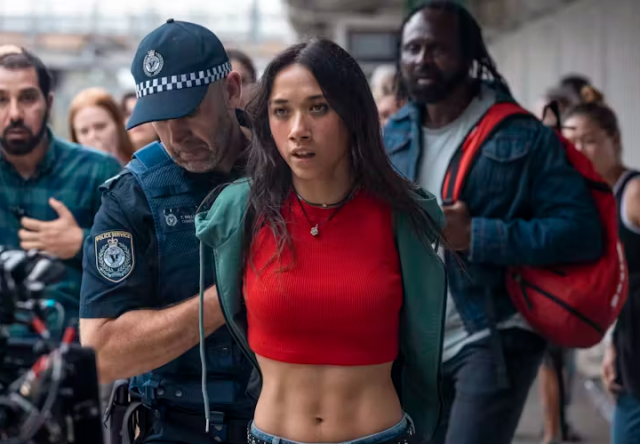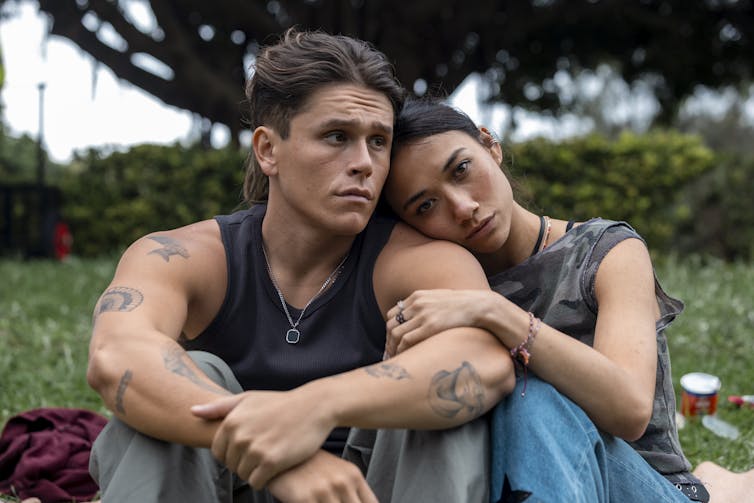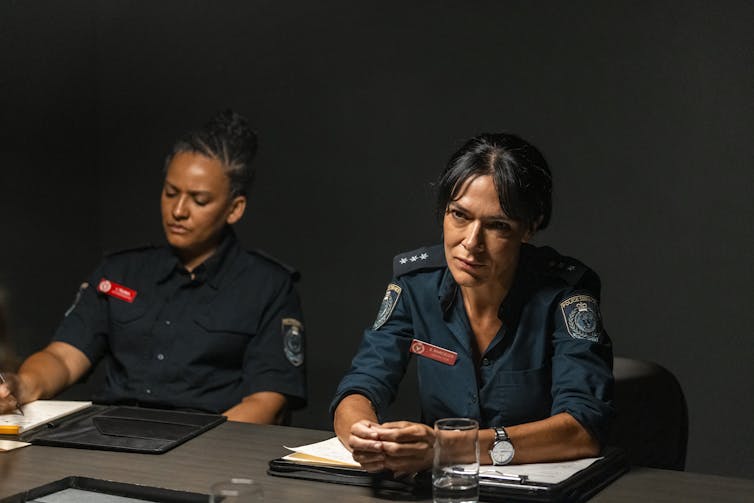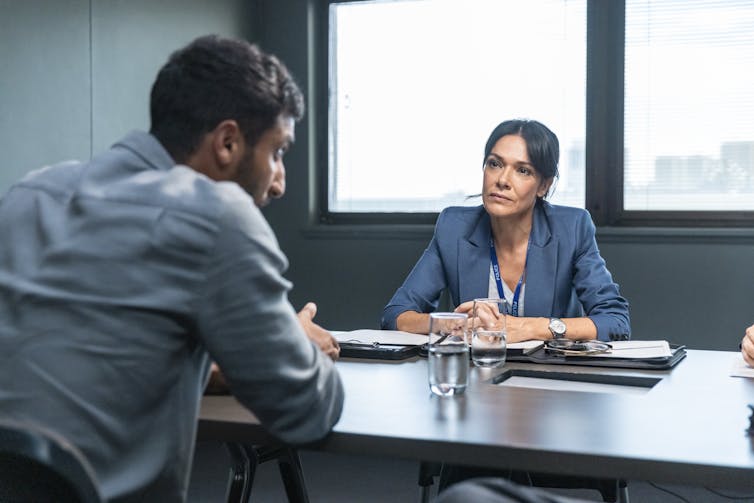
The new Stan Original Australian crime series, Critical Incident, joins a long and impressive list of local crime dramas from streaming platforms, including Scrublands (2023) and Binge’s recent release High Country.
This time, the camera zooms in on various multicultural locations across Western Sydney – providing a compelling aesthetic as the backdrop. That said, the story itself misses some key opportunities to engage in more in-depth discussions about the role (and justification) of policing in diverse communities.
A high-stakes pursuit
Set in Western Sydney and starring Akshay Khanna and Zoë Boe, along with Simone Kessell and Erik Thomson, Critical Incident unpacks the psychological turmoil that occurs when things go horribly wrong for Senior Constable Zilficar “Zil” Ahmed (played by Khanna) while on the job.
Following a long and exhausting night on the beat – and out of uniform – Zil pursues Dalia (Zoë Boe), who matches a description given over his police walkie-talkie: a teenage girl of Asian appearance, wearing a red top, who minutes earlier threatened police officers with a flick knife. She is considered dangerous.
Zil hollers for Dalia to stop, but she runs. He gives chase. They soon find themselves running down a busy peak-hour train platform at Blacktown Railway Station. In close pursuit, Zil accidentally knocks a commuter who, caught off balance, falls onto the tracks and is struck by the oncoming train.
Dalia is cornered by two uniformed police officers at the other end of the station. She is arrested, but is determined not to be the suspect.

A simplistic police narrative
Dalia’s reason for running from Zil sets up a series of complex questions about racial profiling and policing within the highly multicultural City of Blacktown, Sydney.
The scenario also asks fascinating questions of gender and age dynamics. If a plain clothed man yells “stop, police” to a teenage girl, is it reasonable for her to be suspicious and run? Another question raised here concerns the weight of the police uniform, wherein an officer disrobed of his loses all sense of societal authority.
The first two episodes – with their broad societal questions about police relations within communities such as Blacktown – are both gripping and excellently paced. However, the show pivots to something less interesting as it subsequently starts to focus on Zil’s determination to prove Dalia isn’t all she seems to be.
As Dalia moves deeper into the criminal underbelly of drug pushing, Zil is eventually vindicated for his hunch to pursue her at all costs.
The narrative seems to reinforce the idea that police officers only pursue “bad” people. But what are the consequences when they pursue the wrong person? This seems a far more interesting question than what is explored in later episodes.

Authentic aesthetics
The producers of Critical Incident have made a point of saying “this is not a cop show. This is not an organised crime show. This is drama. A drama about when things go wrong on the job and it just so happens your job is being a police officer”.
Nevertheless, considering where the show goes with its plotting of police procedure and crooked cops, it plays out very much like a cop drama – and will certainly appeal to fans of such cat-and-mouse scenarios.
Those wanting more of a psychological drama set within policing, such as BBC’s The Responder (2022), may be left feeling unsatisfied with where Critical Incident ultimately goes.

Another criticism of the show is that it struggles to elicit any meaningful sense of empathy with the central characters. It is hard to feel very deeply for these characters when they are hurt, endangered or even killed.
Part of the issue is the speed for which the show is plotted. Things move at a breakneck pace, without the necessary screen time needed to build rapport between the audience and the characters.
The teenager Zil accidentally pushes onto the train tracks is barely mentioned or drawn into the story in any satisfactory way. This seems like an odd oversight considering this character becomes collateral damage in Zil and Dalia’s reckless chase, which begs the question of when police pursuits are justified – and when they merely put civilians at risk.

Visually, Critical Incident has an authentic aesthetic, with filming taking place on location in Western Sydney’s suburbs of Blacktown, Granville, Parramatta and Greenacre. As such, it draws obvious comparison to the critically acclaimed SBS police series, East West 101 (2007–11), also set in Sydney’s industrial and multicultural areas.
If Critical Incident continues past its first season, it would be interesting to see it expand beyond the familiar interior police drama narrative and dig deeper into the multicultural aspects of its locations and characters, in a similar way to East West 101.
Critical Incident is streaming on Stan from today.![]()
Stephen Gaunson, Associate Professor in Cinema Studies, RMIT University
This article is republished from The Conversation under a Creative Commons license. Read the original article.
The Conversation
The Conversation Australia and New Zealand is a unique collaboration between academics and journalists that in just 10 years has become the world’s leading publisher of research-based news and analysis.
